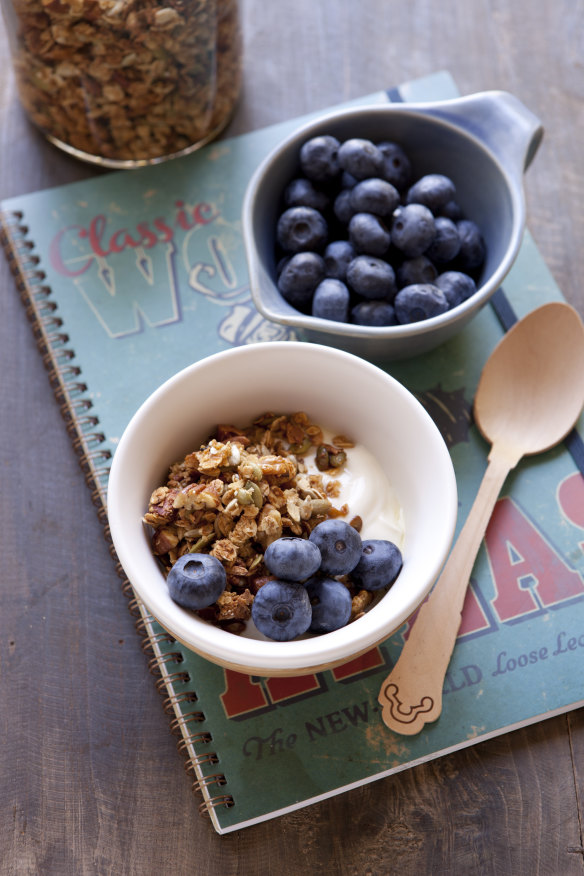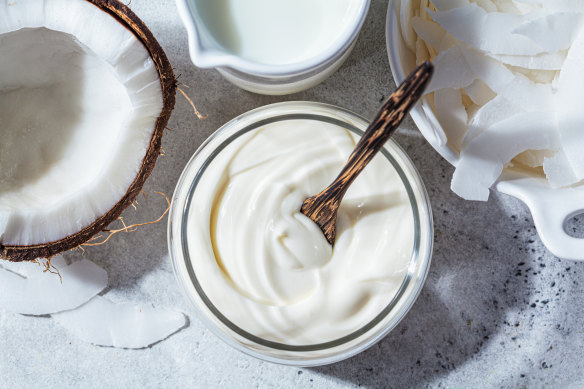Natural, Greek, coconut, high-protein: The nutritional pros and cons of your favourite yoghurt
With the range of yoghurts ever expanding in the supermarket, how do you know which one is right for you? Here’s a simple guide to get you started.
Yoghurts have come a long way since the time you only needed to decide whether you wanted vanilla or strawberry to team with your breakfast.
Now choices include natural, fruit, coconut, Greek, high-protein and high-protein Greek, plus a growing range of plant-based yoghurts that differ significantly when it comes to nutritional profile – and taste for that matter.
Here is everything you need to know about the most common yoghurts found in supermarkets, and the nutritional pros and cons of each.
Natural yoghurt
Not so common nowadays, natural yoghurt is a simple blend of cow’s milk and live cultures that are fermented, thickened and then packaged without any other fruits, sugars or flavours added. With just zero to 4 per cent fat, 5 grams of natural sugars and almost 200 milligrams of calcium per 100 grams, natural yoghurt is an excellent option nutritionally and offers the bonus of probiotic cultures, which are associated with a number of digestive health benefits. If you can track down natural yoghurt in supermarkets, it can be used in baking, enjoyed with fruit or cereal, or in mixed dishes as a lower-fat alternative to cream and sour cream.
Pros: Naturally low in sugars, high in calcium and a source of live cultures
Cons: Tricky to find in supermarkets as most yoghurts are Greek or flavoured varieties

Fruit yoghurt
Fruit yoghurt has come a long way in the past 20 years, with a shift towards much lower-sugar varieties compared to a few years ago, when a tub could contain as much as six teaspoons of the white stuff. As a rule of thumb, the less added sugar in a fruit yoghurt the better, and there is a growing range of “no added sugar” varieties of both Greek and natural yoghurt products. There is also a small handful of “diet” varieties of sweet yoghurt that still contain sweeteners, so where possible seek out options that are labelled as naturally sweetened rather than sweetened with artificial options, which are identified on the label by the 950s additive description.
Pros: Sweeter options that may be more palatable, especially for children
Cons: Can be hard to find tasty “no added sugar” options
Greek yoghurt
The key difference between Greek yoghurt and regular yoghurt is that Greek yoghurt is made using different processing techniques in which the yoghurt is strained and fermented with live bacterial cultures, which concentrates the protein while also reducing the lactose content (naturally occurring sugar found in milk), creating a denser product with a stronger flavour. Nutritionally, Greek yoghurt contains more protein and less natural sugar, with lower amounts of calcium than other varieties. You can find a range of different Greek options, from reduced or low-fat varieties to full-fat Greek yoghurt, which contains close to 10 per cent fat. Like regular yoghurt, Greek yoghurt can be enjoyed with your favourite cereal or fruit. Full-fat Greek yoghurt also bakes well, and makes an excellent alternative to cream in mixed recipes.
Pros: Higher in protein and lower in sugars than natural yoghurt
Cons: Has a strong taste and texture, which may not always appeal

Greek-style yoghurt
The main difference between Greek and Greek-style yoghurt is the processing method. Greek-style yoghurt is not always strained in the same time-consuming way as regular Greek yoghurt. Rather, it is processed with a range of thickeners and gums to give it a similar texture to Greek yoghurt, but one that is more stable and lasts longer than fresh Greek yoghurt. It’s a more highly processed product, so if you are looking for Greek yoghurt, opting for the real thing rather than “Greek-style” is the way to go nutritionally.
Pros: May be more palatable than Greek yoghurt
Cons: A much more processed form of yoghurt
High-protein yoghurt
This yoghurt variety generally has a base of Greek yoghurt or extra protein added to target a younger, active yoghurt consumer. Protein content ranges from 10 to 20 grams per 170- to 200-gram serve, compared to half of this in regular serves of yoghurt. Protein-rich yoghurts can have a significant carbohydrate load with extra sugars added, so you need to pay close attention to the labels and ideally seek out options labelled “no added sugar”. The only downside of most of these protein-rich options is that they are too high in protein for children.
Pros: Low-calorie, high-protein, nutrient-rich food
Cons: Not appropriate for children

Plant-based yoghurt
With the demand for plant-based foods continuing to grow, there is also a growing range of plant-based yoghurt options including soy, oat and coconut yoghurts, however their distinctive taste and textures mean their popularity varies. Generally speaking, plant-based yoghurts offer minimal protein compared to dairy-based yoghurt (zero to 3 per cent compared to 5 to 20 per cent for dairy) and often have added sugars to help make them more palatable. Plant-based yoghurts also lack the key nutrients, including calcium, that you would usually get from a natural yoghurt. So if you prefer plant-based eating, or need to avoid dairy, always check the ingredient list on your plant-based yoghurts and opt for one that contains minimal added sugars, or seek out one of the handful of soy-based options that do contain protein.
Pros: Plant-based option
Cons: Not always palatable and lacks the nutritional profile of dairy-based yoghurt
The best recipes from Australia's leading chefs straight to your inbox.
Sign up